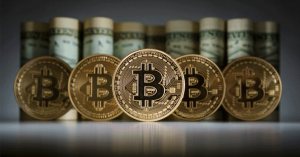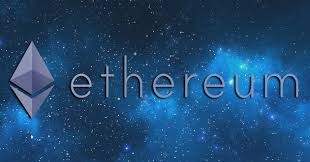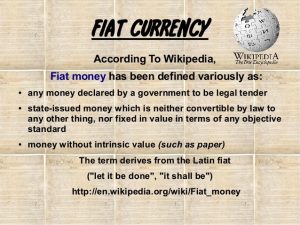The term ‘Bitcoin’ refers to a block chain asset whose units is created and managed by decentralized computer network and stored electronically in a block chain. A block chain is a continuously growing list of records, called blocks, which are linked and secured using cryptography (Codes). For the crypto currency public ledger of all transactions that have ever been executed, are maintained in which cryptographic proof replaces central trust.
While there are over 600 different crypto currencies at the moment, Bitcoin is by far the most dominant in terms of capitalization and acceptance. There are certain benefits of investing in Bitcoin. It helps to diversify your portfolio. And, Bitcoin has a low connection to other asset classes. Bitcoin became the first decentralized crypto currency in 2009 an d it is invented by Satoshi Nakamoto (this is the name used by the unknown person who designed bitcoin). Since then, numerous crypto currencies have been created. These are frequently called altcoins, because they are created as an alternative by blending bitcoin. The bitcoins and its derivatives use decentralized control as opposite to centralized electronic money and centralized banking system.
d it is invented by Satoshi Nakamoto (this is the name used by the unknown person who designed bitcoin). Since then, numerous crypto currencies have been created. These are frequently called altcoins, because they are created as an alternative by blending bitcoin. The bitcoins and its derivatives use decentralized control as opposite to centralized electronic money and centralized banking system.
A Satoshi is the smallest fraction of a Bitcoin that can currently be sent: 0.00000001 BTC, that is, a hundredth of a millionth BTC. In the future, however, the protocol may be updated to allow further subdivisions, as they would be needed.
As of 6 February 2016, there are 15.2 million bitcoins circulation of a capped total of 21 million. Over 72% of all bitcoins are already in circulation. Currently there are 25 new bitcoins produced (mined) every 10 minutes. This honor is thought to belong to bitcoin’s shadowy inventor Satoshi Nakamoto, who is estimated to have mined 1 million bitcoins in the currency’s early days. His stash is spread across many wallets
You can buy with one bitcoin share of Amazon stock, three ounces of gold, 15 inch Mac-Book Pro. Even, hotel chain Howard Johnson will gladly take your Bitcoins in exchange for a hotel stay. You can buy guns. PizzaForCoins.com makes it possible to order a Dominos pizza with your Bitcoins. A Texas family recently sold their Porsche Cayman for 300 Bitcoins. And, you can swap Bitcoins for real currency using a Bitcoin exchange like MtGox.com.
Some other famous crypto currencies are Litecoin (LTC), launched in the year 2011, were among the initial crypto currencies following bitcoin and were often referred to as ‘silver to Bitcoin’s gold. It was created by Charlie Lee, a MIT graduate and former Google engineer. 2) Ethereum (ETH)
Launched in 2015, Ethereum is a decentralized software platform that enables Smart Contracts and Distributed Applications (ĐApps) to be built and run without any downtime, fraud, control or interference from a third party. During 2014, Ethereum had launched a pre-sale for ether which had received an overwhelming response.
Zcash, another decentralized and open-source crypto currency launched in the latter part of 2016, looks promising. “If Bitcoin is like http for money, Zcash is https,” is how Zcash defines itself. Zcash offers privacy and selective transparency of transactions. Thus, like https, Zcash claims to provide extra security or privacy where all transactions are recorded and published on a block chain, but details such as the sender, recipient, and amount remain private. Zcash offers its users the choice of ‘shielded’ transactions, which allow for content to be encrypted using advanced cryptographic technique.
Dash (originally known as Darkcoin) is a more secretive version of Bitcoin. Dash offers more anonymity as it works on a decentralized master code network that makes transactions almost untraceably. Launched in January 2014, Dash experienced an increasing fan following in a short span of time. This crypto currency was created and developed by Evan Duffield and can be mined using a CPU or GPU.
Ripple is a real-time global settlement network that offers instant, certain and low-cost international payments. Ripple “enables banks to settle cross-border payments in real time, with end-to-end transparency, and at lower costs.” Released in 2012, Ripple currency has a market capitalization of $1.26 billion. Ripple’s consensus ledger — its method of conformation — doesn’t need mining, a feature that deviates from bitcoin and altcoins. Since Ripple’s structure doesn’t require mining, it reduces the usage of computing power, and minimizes network latency.
Monero is a secure, private and untraceable currency. This open source crypto currency was launched in April 2014 and soon spiked great interest among the cryptography community and enthusiasts. The development of this crypto currency is completely donation-based and community-driven. Monero has been launched with a strong focus on decentralization and scalability, and enables complete privacy by using a special technique called ‘ring signatures.’ With this technique, there appears a group of cryptographic signatures including at least one real participant – but since they all appear valid, the real one cannot be isolated.
Bitcoin’s market value is $ 56 billion, which surpasses value of General Motors. Though, bitcoin is the latest mania as a digital asset on top of transformative technology which could eventually replace fiat currency. Fiat currency is declared by government as legal tender, but is not backed by a physical commodity. The value of fiat money is derived from the relationship between supply and demand rather than the value of the material that the money is made of. Historically, most currencies were based on physical commodities such as gold or silver, but fiat money is based solely on the faith and credit of the economy. Most modern paper currencies are fiat currencies; they have no intrinsic value and are used solely as a means of payment.
One of the Bank of America strategists has mentioned that while ‘early adopters’ (a segment of buyers who just buy things by their gut feeling) have bought and enjoyed sharp price appreciation in crypto currencies there is no certainty that it will continue.














































